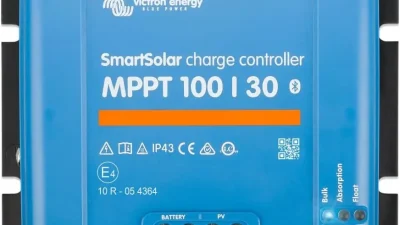Protecting your solar panels and related components against extreme hazards like a nuclear blast is a something worth looking into, especially for those in our prepper community. With the increasing focus on energy resilience and grid independence, many are asking if it is possible to shield solar systems from the catastrophic effects of a nuclear explosion. This comprehensive guide will explain what happens to solar setups during such events and offer practical strategies for minimizing damage to your solar panels, inverters, charge controllers, batteries, and wiring.
Understanding how to keep your solar power system safe from a nuclear blast is crucial for anyone interested in disaster preparedness or off grid living. By the end of this article, you’ll have a clear grasp of the threats posed by nuclear blasts and actionable steps you can take to protect valuable clean energy assets.
Table of Contents
- How Nuclear Blasts Impact Solar Systems
- The Danger of Electromagnetic Pulses (EMP)
- Physical Protection for Solar Panels
- EMP Hardening: Protecting Charge Controllers, Inverters, and Batteries
- Shielding and Protecting Solar Wiring
- System Redundancy and Maintenance After a Nuclear Event
- Conclusion: Key Takeaways on Nuclear Blast Solar Protection
How Nuclear Blasts Impact Solar Systems
A nuclear explosion produces several destructive effects: blast pressure, intense heat, electromagnetic pulse (EMP), nuclear radiation, and radioactive fallout. Each of these can damage your solar power setup in different ways. The degree of damage depends on the distance from ground zero, system design, placement, and the nature of the components.
Effects on Solar Panels
- Blast Pressure: The shockwave from a nearby nuclear detonation can shatter solar panels, destroy mounting hardware, and damage supporting structures.
- Thermal Radiation: The extreme heat can burn or warp solar cell surfaces, delaminate protective materials, and discolor glass covers.
- Ionizing Radiation: High energy gamma rays and neutrons may reduce panel efficiency, especially for thin film or lower quality panels. Most crystalline silicon panels are somewhat resistant but still at risk.
- Fallout: Radioactive dust and debris can blanket panels, blocking sunlight and risking long term contamination.
Understanding these threats can help you develop a layered protection plan, tailored to your location and risk level.
The Danger of Electromagnetic Pulses (EMP)
One of the greatest threats to electronics during a nuclear event is the electromagnetic pulse. An EMP is a burst of electromagnetic energy that can instantly overload and destroy electrical circuits in exposed devices. Nuclear detonations at high altitude are capable of generating EMPs over very large areas, putting most unshielded electronics, including solar systems, at risk.
How EMP Affects Solar Power Systems
- Inverters and Charge Controllers: These contain sensitive electronics vulnerable to high voltage surges from EMP.
- Batteries: While batteries themselves are relatively resilient, built in battery management systems (BMS) can be destroyed by EMP induced currents.
- Wiring: Long spans of wire can act as antennas, channeling EMP surges directly into solar electronics and batteries, causing widespread system failure.
Lab simulations (like MIL-STD-461/462, RS105, IEC 61000-4-5 standards) and military research show that unconnected, small electronic devices (e.g., a radio in a Faraday cage, or a bare PCB on a tabletop) are relatively immune to EMP, unless they have long conductors attached.
Damage seen in Hiroshima/Nagasaki, and in Starfish Prime (1962), as well as modern military lab tests consistently show two things:
- Connected devices (radios, phones, alarm systems, etc., with power/phone lines attached) are at high risk.
- Unconnected or battery operated devices, not in line with long conductors, often survive or only suffer temporary malfunctions.
EMP protection is, therefore, one of the most critical aspects when planning a survival ready solar installation.
Physical Protection for Solar Panels
Protecting solar panels from the direct mechanical force and heat of a nuclear blast is challenging, but not impossible if you are prepared. Here are some strategies to increase survivability:
Reinforced Mounting and Removable Arrays
- Use robust, reinforced mounting systems rated for extreme wind and pressure loads.
- Consider tilting mechanisms or frames that let you lower panels closer to the ground during alerts.
- Modular and removable solar panel arrays can be quickly disconnected and stowed in a protected structure, like a reinforced garage or bunker, if given sufficient warning.
Protective Coverings
- Store heavy duty protective coverings, such as metal shutters or fire resistant blankets, that can be rapidly installed over panels to shield them from thermal radiation and flying debris.
- For permanent installations, transparent polycarbonate shields may offer an extra layer against impacts, though they should be designed to minimize light loss during normal operation.
After an event, inspect all panels for cracks, delamination, or fallout buildup. Cleaning panels after radioactive fallout requires specialized safety equipment and procedures to avoid contamination exposure.
EMP Hardening: Protecting Charge Controllers, Inverters, and Batteries
Unlike the robust exteriors of solar panels, the sensitive electronics inside inverters and charge controllers are vastly more vulnerable to EMP. Effective EMP protection for these components is essential for any long term recovery plan.
Physical and Electrical Shielding
- Faraday Cages: Enclose critical electronics in a continuous, grounded metal enclosure. A true Faraday cage blocks external electromagnetic fields, protecting anything inside from EMP surges.
- Shielded Enclosures: Install backup inverters, charge controllers, and extra BMS units in shielded safes or metal boxes kept isolated from the main system until needed.
Surge Protection and Isolation
- Install surge protection devices at all entry and exit points of your system to block incoming EMP energy.
- Use disconnect switches and properly grounded wiring to isolate the solar array from electronics during high risk periods.
- Keep spare components stored offline, unplugged, and shielded from grid or antenna connections to reduce risk of simultaneous loss.
Batteries
- Store critical backup battery banks in shielded enclosures with simple, removable connections. Lead acid batteries tend to be more EMP resilient than some lithium ion types, especially if no electronics are attached during the pulse.
Shielding and Protecting Solar Wiring
Solar wiring is often overlooked but can become an Achilles’ heel in nuclear and EMP scenarios. Long wire runs act as antennas, gathering and channeling the electromagnetic pulse into your most valuable components.
Strategies for Safe Wiring
- Use metal conduit or shielded cable for all outdoor and critical wire runs. Steel or thick aluminum is ideal as shielding material.
- Keep wire runs as short as possible to reduce the antenna effect.
- Physically route wiring underground where feasible. Not only does this shield from heat and shockwaves, but soil and concrete provide significant EMP protection.
- Install shunt devices to instantly redirect any extreme voltage surges into the earth, minimizing damage upstream.
After a nuclear event, thoroughly test and inspect every wire and connection for signs of arcing, burning, or insulation failure. Damaged wiring can lead to shorts, fires, or long term inefficiency.
System Redundancy and Maintenance After a Nuclear Event
Even the best planning cannot guarantee every piece of your solar energy system will survive a nuclear event intact. A robust maintenance and redundancy plan helps you restore critical functions as soon as it is safe to do so.
Build in Redundancy
- Maintain spare modules for panels, inverters, charge controllers, BMS units, and fuses stored in shielded containers.
- Design your system so that separate strings or subsystems can operate independently if part of the array is damaged.
- Keep comprehensive documentation and wiring diagrams offline and in physical format for field repairs.
Post Blast System Checks
- Before reconnecting to any load, inspect every panel and device. Use an insulation resistance tester and multimeter to ensure safety.
- Wear proper protective gear when working near radioactive fallout. Cleaning and repair operations may require decontamination procedures recommended by health authorities.
Know When to Replace
-
If a panel or device fails basic safety checks or shows evidence of EMP
damage (such as scorched circuits, nonresponsive controllers, or unexplained
voltage drops), replace it with a properly shielded spare component. Never
attempt to reuse damaged electronics around critical loads, as hidden faults
can cause fires or further failures down the line.
Establish a regular post disaster maintenance protocol, including periodic re cleaning of panels impacted by fallout, checking all mounting hardware for blast or heat related deformation, retesting batteries for proper function, and confirming system grounding.
Conclusion: Key Takeaways on Nuclear Blast Solar Protection
Protecting your solar panels and components from a nuclear blast involves rigorous planning and preparation. While no system can be made entirely invulnerable to the overwhelming energy of a direct nuclear detonation, careful attention can greatly improve the odds of survival for your solar system and speed recovery after an event. By understanding nuclear threats such as blast pressure, thermal radiation, fallout, and the all important electromagnetic pulse, you can tailor your approach to maximize the resilience of your renewable energy investment.
Start by identifying your system’s most vulnerable points typically, the inverter, charge controller, wiring, and exposed panels. Use robust structural mounts and removable arrays where possible, and store critical components in Faraday cages or shielded enclosures whenever they are not actively in use. Shield all wiring in metal conduit, and keep emergency spares offline, shielded, and ready for rapid deployment. For those living near potential targets or key infrastructure, underground installations and protective coverings offer an extra layer of defense.
Proactive maintenance, redundant systems, and regular drills will ensure you can restore essential solar functions after a nuclear blast threatens your area. While the risks of nuclear disaster are extreme, with the right protection measures, you can safeguard your energy independence and be ready for almost any scenario.





